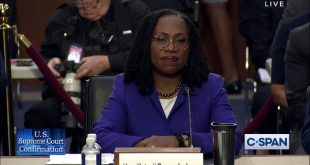 President Reagan famously observed that, “the nine most dangerous words in the English language are ‘I’m from the government and I’m here to help.'”
President Reagan famously observed that, “the nine most dangerous words in the English language are ‘I’m from the government and I’m here to help.'”
This is a warning worth keeping in mind when logging onto the website of the Consumer Financial Protection Bureau and immediately encountering in large letters, “We’re on your side.”
CFPB was established as part of the Dodd-Frank Act, passed in 2010 in response to the financial crisis of 2007-08. According to the agency’s website, CFPB makes sure “banks, lenders, and other financial companies treat you fairly.”
Now the CFPB is taking on the payday lending business.
This is a business, which provides short-term loans covering paycheck to paycheck.
According to a study by the Pew Charitable Trust, “12 million borrowers spend more than $7 billion,” annually on payday loans.
And, according to the study, those most likely to take these loans are those without a four-year college degree, home renters, African Americans, those earning below $40,000 annually and those separated or divorced.
Data show that users of these loans borrow on average $375 eight times per year, spending $520 on interest. Going borrowing rate is $15 per $100. So these loans are not cheap.
And, according to the Pew study, 69 percent use these loans go to cover recurring living expenses, such as utilities, credit card bills, rent or mortgage payments or food.
The proposed new regulations from CFPB requires these lenders to do full credit checks and examination into the financial situation of prospective borrowers to make sure they can pay back the loan. There’s also an additional maze of proposed regulations making it more difficult, for instance, to take multiple loans.
All of this is being done, according the agency, to curb “the cycle of debt.”
As result of new burdens put on lenders, many of whom are storefront operations without the capability to do these kinds of checks, CFPB estimates that as much of 80 percent of the loan volume could be curtailed.
According to the Pew survey, if payday loans were not available, “81 percent of borrowers say they would cut back on expenses. Many also would delay on paying some bills, rely on friends and family, or sell personal possessions.”
But who ever said life is easy? How about this option? After years of wasteful, expensive, counterproductive federal programs, allegedly trying to help low-income citizens, but in fact just causing them problems, how about the government bowing out for a change?
As result of bank regulations enacted by the same Dodd-Frank law that created the Consumer Financial Protection Bureau, the Wall Street Journal reports that the percentage of loans made by the ten largest banks to blacks dropped from 8 percent in 2007 to 5 percent in 2014. The percentage of total loans to Hispanics dropped from 11 percent in 2007 to 7 percent in 2014.
Thanks so much, Washington, for taking care of minorities.
Consider who is trying to save a class of citizens from “the cycle of debt.”
When the Obama administration assumed office in 2009, federal debt held by the public was 40 percent of gross national product. Today it has doubled to over 80 percent. In another 10 years, with business as usual, the Congressional Budget Office projects it will be up to 86 percent.
Has anyone heard recently any political leader seriously taking on these huge debt challenges of the nation? Yet, as our federal government borrows, on our behalf, into oblivion, they think it’s their business to barge into the private affairs of private citizens.
How about the federal government taking a haircut, rather than forcing our citizens to do it because of new regulations?
Let’s get rid of some bureaucrats meddling in other peoples lives, cut federal spending, cut taxes, reduce regulations, get the economy growing and create jobs.
This is what folks need. Not the nanny state.
COPYRIGHT 2016 STAR PARKER
DISTRIBUTED BY CREATORS.COM
Photo credit: Taber Andrew Bain (Creative Commons) – Some rights reserved
 Black Community News News and Commentary for Christians
Black Community News News and Commentary for Christians



